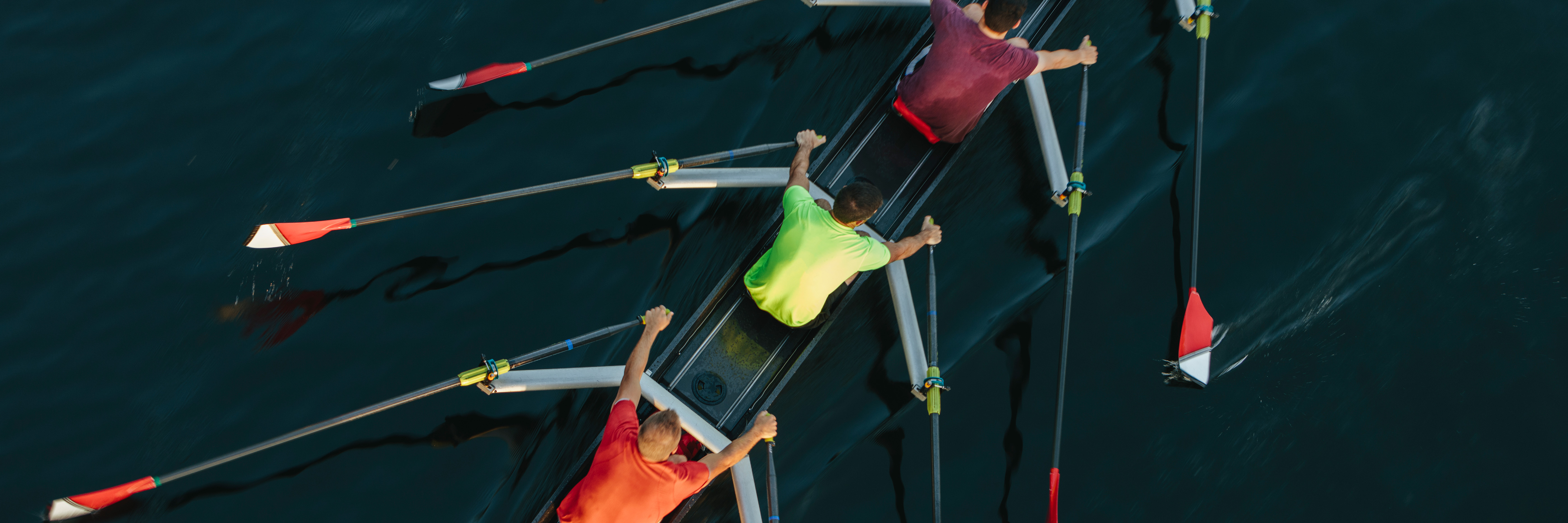Rowing Glossary

27 July 2023
Rowing is a unique sport that has a language all its own. It can be confusing for newcomers to understand the terminology, and even experienced rowers may not know every single term. That's why we've created a rowing glossary to help you navigate the jargon and improve your understanding of the sport.
- Catch: The point at which the oar blade is placed in the water and the rower begins to apply force.
- Drive: The portion of the rowing stroke where the rower applies force to the oar, propelling the boat forward.
- Finish: The point at which the oar blade is removed from the water at the end of the drive phase.
- Recovery: The portion of the rowing stroke where the rower prepares to take another stroke, usually involving sliding the seat back up to the catch position.
- Feather: The act of turning the oar blade parallel to the water during the recovery phase.
- Rigger: The metal frame that attaches to the side of the boat, holding the oarlocks in place.
- Gate: The device attached to the rigger that holds the oar in place during the rowing stroke.
- Cox (Coxswain): The person who sits in the boat and steers, and often provides instructions to the rowers.
- Rudder: A device attached to the stern of the boat that is used to steer the boat.
- Blade: The wide, flat part of the oar which is used to propel the boat through the water.
- Sculling: A form of rowing where the rower uses two oars, one in each hand.
- Sweep: A form of rowing where the rower uses one oar with both hands.
- Rating: The number of strokes per minute that a crew is rowing at.
- Cox Box: A device that measures and displays information such as stroke rate, time and distance.
- Bow: The front end of the boat.
- Stern: The back end of the boat.
- Rigging: The process of adjusting the oars, oarlocks and other components of the boat to optimize the rowing experience for the crew.
- Crab: A mistake made by a rower when the oar blade gets caught in the water, causing the rower to lose control and often fall out of the boat.
- Shell: The name for the long, narrow boats used in rowing.
- Stroke side: The right-hand side of the boat when facing the cox.
- Bow side: The left-hand side of the boat when facing the cox.
- Coxless: A type of boat that does not have a coxswain.
- Boat class: The different categories of rowing boats, including singles, doubles, quads, fours, and eights.
- Ergo (Ergometer): A rowing machine used for indoor training.
- Novice: A new or inexperienced rower.
- Slide: The tracks that the seats of the rowers move back and forth on.
- Handle: The part of the oar that the rower holds onto to control the blade.
- Gunnel (or gunwale): The top edge of a rowing boat where the sides meet the deck.
- Regatta: A competitive rowing event where teams from different clubs race against each other over a set distance and course.
- Fleet: a group of boats belonging to a particular club or organisation.
Rowing is a sport that requires a great deal of technique and coordination. Understanding the terms and language used by coaches and rowers is an essential part of improving your skills and getting the most out of this rewarding and challenging sport. By familiarising yourself with the terminology used in the rowing community, you will not only be able to communicate more effectively with your teammates, but you will also be better equipped to analyse your own performance and work on areas that need improvement.